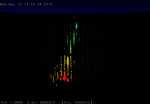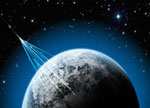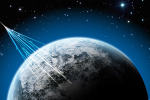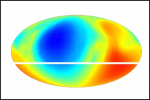There are
“cosmic rays”
36
Research at WIPAC
At WIPAC, research focuses on particle astrophysics, which uses neutrinos, cosmic rays, and gamma rays to explore the extreme universe. Very powerful processes dominate the cosmos...
Basic page
Explore
The universe is a mysterious place. Although much is known about the physics processes that guide it, there are many more unanswered questions. WIPAC addresses contemporary astroparticle ph...
Basic page
Tuesday, April 17, 2012 - 12:30pm
Although cosmic rays were discovered 100 years ago, their origin remains one of the most enduring mysteries in physics. Now, the IceCube Neutrino Observatory, a massive detector in Antarctica, is honing in on how the highest energy cosmic rays are produced.
"Although we have not discovered where cosmic rays come from, we have taken a major step towards ruling out one of the leading predictions," said IceCube principal investigator and University of Wisconsin - Madison physics professor Francis Halzen.
Article
Wednesday, April 18, 2012 - 12:00pm
In 1912, Austrian physicist Victor Hess was using balloons to measure radiation levels in the Earth’s atmosphere. His innovative and meticulous work required him to travel with the balloon up to altitudes of 5.3 km, monitoring the measuring equipment and checking data.
The danger of traveling to such heights paid off for Hess. Unexpectedly, he found higher levels of radiation as the balloon rose and concluded that radiation was penetrating the atmosphere from outer space.
Article
Thursday, February 27, 2014 - 11:45am
In a paper recently published in Science Express, cosmic ray data from IceCube was used alongside observations from NASA's Interstellar Boundary Explorer, or IBEX, in a study of the magnetic fields that surround our solar system.
Article
Monday, April 7, 2014 - 8:00am
The American Physical Society’s (APS) April Meeting 2014 is currently underway in Savannah, Georgia. The meeting, which began on Saturday, April 5th, and runs through Wednesday, April 8th, includes presentations from a number of researchers from the Wisconsin IceCube Particle Astrophysics Center (WIPAC).
Article





